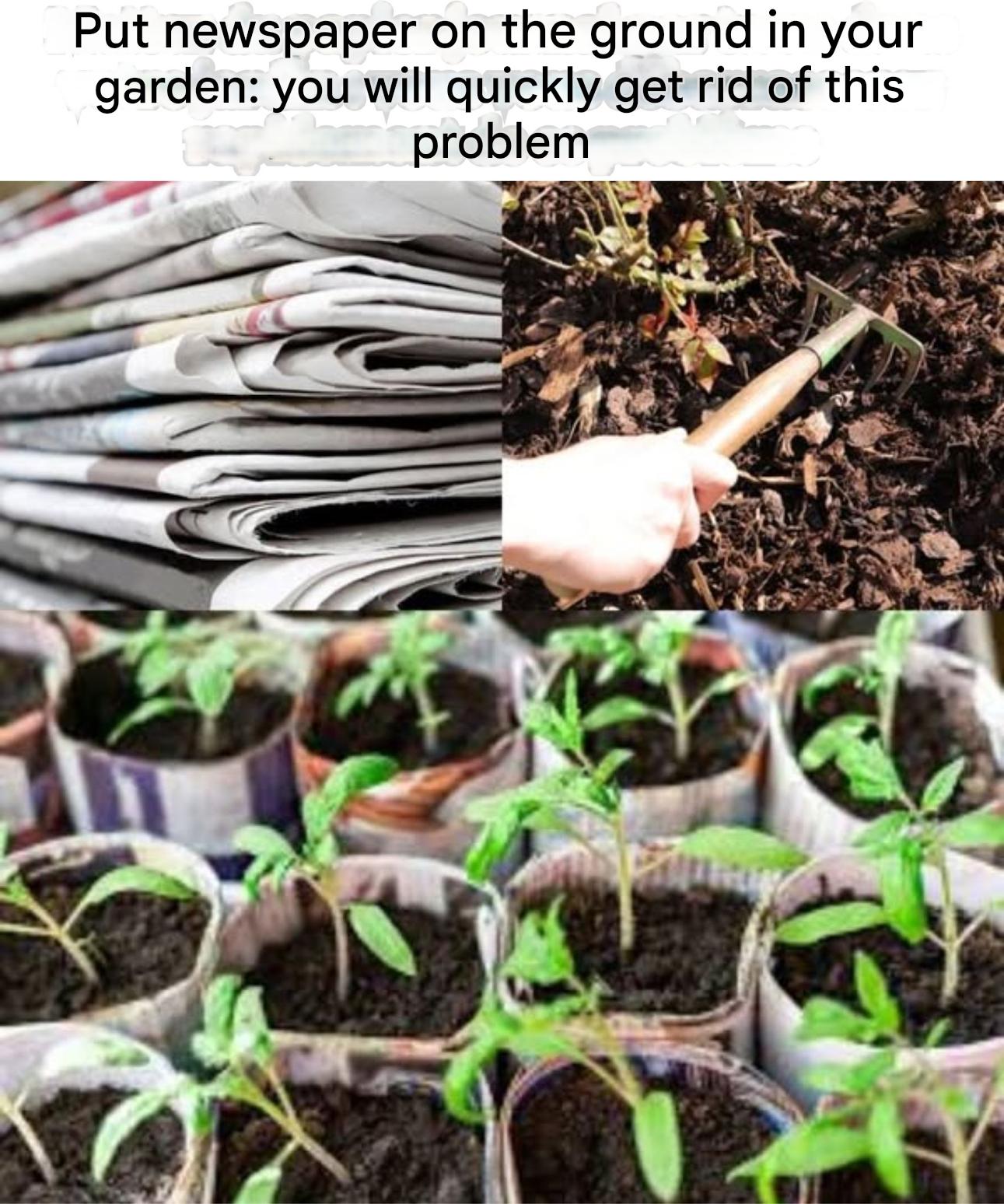ADVERTISEMENT
Using Newsprint in Your Backyard: An Environmentally Friendly Solution to Remove Weeds
Maintaining a beautiful and healthy garden often comes with the challenge of managing weeds. While there are many commercial herbicides on the market, they can be harmful to the environment, pets, and even humans. If you’re looking for a more eco-friendly and effective way to deal with weeds in your backyard, consider using newsprint—a simple, natural solution that’s not only effective but also sustainable.
In this article, we’ll explain how to use newsprint to tackle weeds, why it works, and the benefits of incorporating this method into your gardening routine.
Why Newsprint Works for Weed Control
Newsprint is a great alternative to chemical weedkillers because it blocks sunlight and prevents weeds from growing, all while decomposing naturally. The process works because weeds need sunlight to grow, and by layering newsprint over them, you create a barrier that suppresses their ability to photosynthesize and grow. As the newsprint decomposes, it enriches the soil with organic matter, making it a win-win for both your garden and the environment.
Here’s why using newsprint is such an effective and eco-friendly solution for controlling weeds:
- Suppresses Weeds: The thick layers of newsprint block out light, which weeds rely on to grow. Without access to sunlight, weeds will die off over time.
- Biodegradable: Unlike plastic or other synthetic weed barriers, newsprint is biodegradable. It will naturally break down and enrich your soil, adding nutrients as it decomposes.
- Inexpensive and Readily Available: Newsprint is often easy to find and cheap, especially if you have old newspapers lying around. It’s a cost-effective option for weed control compared to expensive commercial solutions.
- Safe for the Environment: Newsprint is free from harmful chemicals, making it a safe choice for the environment, pets, and children. It’s a non-toxic solution that won’t harm beneficial insects, plants, or your soil.
- Improves Soil Quality: As newsprint breaks down, it adds organic matter to the soil, which helps improve soil structure, retain moisture, and encourage the growth of beneficial microorganisms.
How to Use Newsprint for Weed Control
Using newsprint in your backyard is easy! Here’s a step-by-step guide to get you started:
Step 1: Gather Your Materials
You will need the following materials:
- Old newspapers (not glossy or colored pages)
- Scissors (if needed)
- A garden hose (to moisten the newsprint)
- Mulch, wood chips, or compost (optional for added protection)
Step 2: Prepare the Area
First, clear the area of any large weeds and debris. You don’t have to remove every single weed, but it’s helpful to trim back larger plants to make the process easier. If there are a lot of weeds, you can pull them out by hand or use a hoe to remove the bigger ones.
Step 3: Lay the Newsprint
Lay the newsprint over the weed-infested area, overlapping the sheets by a few inches. Aim to cover the entire area where you want to prevent weeds from growing. If you’re covering a larger space, you might need multiple layers of newspaper to ensure good coverage.
Make sure to keep the newsprint damp while laying it down—this helps it stay in place and prevents it from flying away in the wind.
Step 4: Water the Newsprint
Once the newsprint is laid out, give it a good watering with a garden hose. This step helps the paper adhere to the ground and keeps it in place while also making it easier for it to break down over time.
Step 5: Add a Layer of Mulch (Optional)
For added protection and aesthetics, you can top the newsprint with a layer of mulch, wood chips, or compost. This helps the newsprint stay in place, prevents it from drying out too quickly, and enhances the overall look of your
